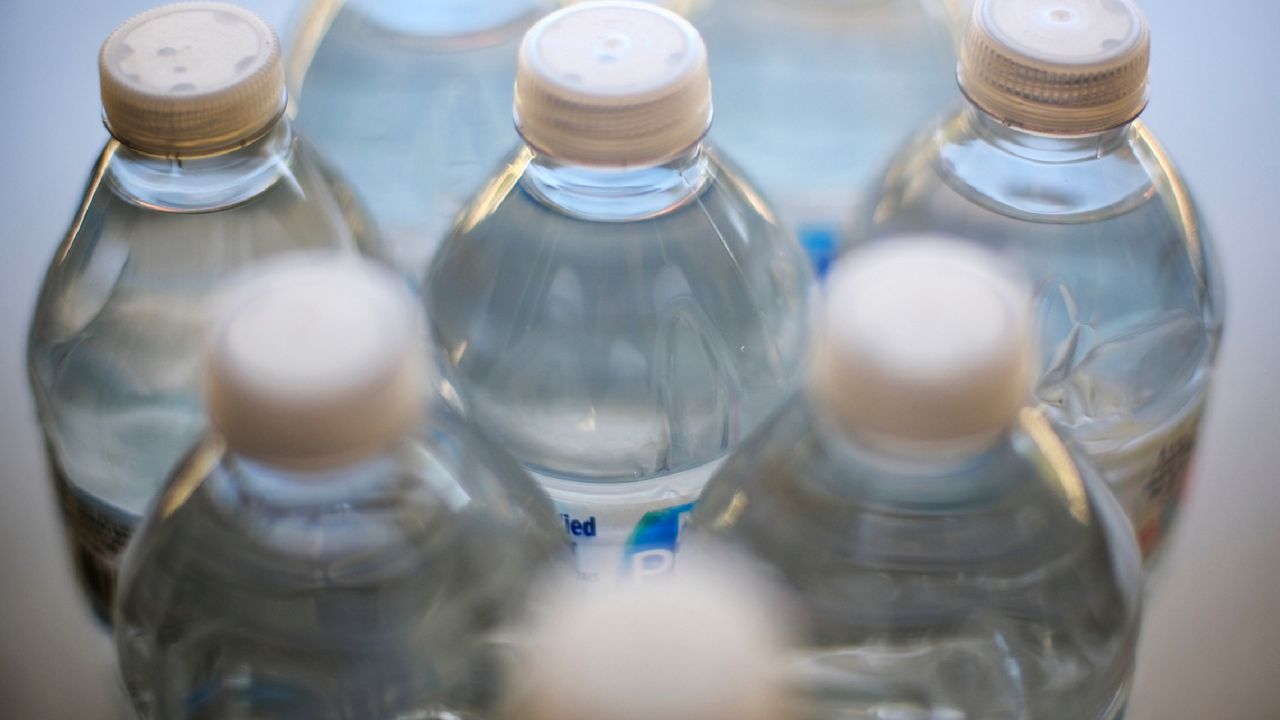LOS ANGELES — For decades, Angelenos have separated household waste into trash, recyclables and compostables, but in the future, drink manufacturers might be required to take back their empty plastic bottles to reuse them, and other makers of plastic products might need to upgrade them to be more durable or repairable.
It's all part of the Comprehensive Plastics Reduction Program the Los Angeles Sanitation and Environment department introduced this month to reduce the amount of plastic waste the agency has to manage.
“The goal at this stage is to begin evaluating the numerous measures that may allow the city to reduce or eliminate the production and use of single-use plastics and encourage reuse of other items, thereby reducing or eliminating the input of single-use plastics in the city’s waste stream and the environment,” LASAN assistant division manager Paul Cobian told Spectrum News 1.
Among the ideas the city is considering: banning single-use plastic water bottles or assigning financial responsibility to plastics producers for their ultimate disposal. No decision has been made about what course of action the city will pursue, Cobian said. For the rest of the month, the department is seeking public input and will spend the next year analyzing possible solutions to a spiraling plastic pollution problem before presenting its findings and recommendations to City Council for action.
Single-use plastic waste has doubled since 2000, according to a recent Global Plastics Outlook report from the Organisation for Economic Co-operation and Development. Just 9% of plastics are recycled, 19% is incinerated and 50% is landfilled. Much of what’s left ends up in the natural environment. In LA, that manifests on beaches strewn with plastic bags and stormwater drains choked with plastic bottles that biodegrade and create microplastics, posing health risks to humans and wildlife.
According to the OECD, two-thirds of plastic waste comes from items that serve a purpose for less than five years — most of it from packaging, consumer products, clothing and textiles.
“Many of those single-use plastics are not recyclable or compostable in the city,” Cobian said.
For the past 10 years, Los Angeles has been focused on so-called upstream solutions to stem the tide of plastics flowing into the waste stream. In 2013, the LA City Council banned single-use carryout bags in grocery stores. In 2019, it adopted an ordinance that only allowed plastic straws upon request. In 2021, the same on-request mandate took effect for disposable foodware accessories such as plastic cutlery.
Last year, City Council adopted three more ordinances to combat plastic waste, including a ban on expanded polystyrene use and an expanded single-use carryout bag ban for retail stores, restaurants and farmer’s markets, as well as a mandate that city facilities and events on city property lead by example and be zero waste.
LASAN does not have data about how effective the city’s plastic bans have been so far. Cobian acknowledges that when the ordinances are disobeyed, bringing businesses into compliance has been more reactive than proactive. Until recently, the department has typically responded to complaints instead of checking to see that businesses are abiding.
“Going forward, it’s going to be us actively going out, stepping into businesses, working with the business owner, educating them and also following up to ensure that they are doing that,” Cobian said.
As part of the Green New Deal Los Angeles adopted in 2019, the city has targeted 90% landfill diversion by 2025, 95% diversion by 2035 and 100% zero waste by 2050. The deal also sets a goal of reducing municipal solid waste generation per person 15% by 2030, including phasing out single-use plastics by 2028.
It also envisions that 25% of waste products and recyclables be productively reused and/or repurposed within LA County by 2025 — a target that increases to 50% by 2035.
Achieving those goals will require more aggressive ideas for plastic product producers to accept responsibility for the waste they cause by making more durable, reusable or compostable items. While Angelenos will continue sorting their trash into three bins and LASAN will continue managing that waste with the system of waste bins, landfills and recycling facilities it already has, “the other tool that we want to use is these legislative ordinances where the consumer is not just buying things because they’re not being offered something else.”
As the city works toward its difficult goal of zero waste, “we’re at a critical stage,” Cobian said. “We have the support of our elected officials. We also have environmental organizations that are in support of this, so I think a lot of it is leveraging the resources that are available and finding a way for us to be able to move forward to achieve these goals. We have to start somewhere.”



